There are no special restrictions on shoes for the first steps, but they must have a heel. Flip-flops or other open-toed shoes without a solid heel should be avoided. For the first steps, even in summer, it is better if the heel is closed. Then the shoes sit well on the foot, do not slip, do not fall down and do not slip.
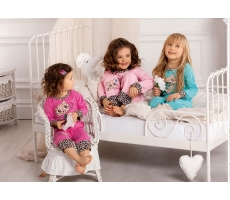
- How to choose the right shoes for children
- Peculiarities in the formation of children's feet
- What is the problem with orthopedic shoes?
- Which shoes should you choose for your child's first steps? An orthopedist explains
- What you should pay attention to when choosing the first shoes for your child
- The most important signs for the 'right' children's shoes
- Adjust the shoe size according to your child's foot size
- Myth: Orthopedic shoes for children are ugly and uncomfortable
- Myth: The material doesn't matter, comfort is the most important thing
- Does my child need orthopedic shoes for their first steps?
- How do I choose a shoe size for my child?
- What are orthopedic shoes?
- Main features
- Who needs orthopedic shoes?
- Can my child wear orthopedic shoes without a 'diagnosis' and doctor's prescription?
- Can corrective (orthopedic) shoes be used to prevent flat feet?
- On which the correct development of the foot depends
- What should be the first shoes for your baby
- principles of selection.
- The best first shoes for babies - Attipas
How to choose the right shoes for children
A child's feet are formed by the age of five or six and the type of footwear they wear determines to a large extent whether the foot forms without deformity or whether foot function is impaired.
If parents know and follow the criteria for choosing the right footwear, it is almost certain that their child will not be at risk of flat feet (except in the case of congenital pathology).
Properly fitting shoes do not compress the foot, do not impair normal blood circulation and contribute to the anatomically correct formation of the spine. When a child wears poor-quality, uncomfortable shoes, there is a good chance they will develop flat feet, which later lead to serious health problems that are difficult to treat. These include incorrect posture and arthrosis of the lower limbs, osteochondrosis of the spine and associated diseases of the internal organs.
Therefore, children's sandals, slippers and shoes should be chosen especially carefully, taking into account the requirements for orthopedic footwear.
Peculiarities in the formation of children's feet
The child is born with a flat foot. There is a fat pad at the site of the future longitudinal arch. This is used for shock absorption, increases the contact surface and helps the child to gain more stability.
As children begin to walk, they lean more on the external arch of the foot. This is known as varus foot, which can occur up to the age of one and a half years. As the child grows, the gait changes. Now the arches of the feet are turned inwards - a valgus foot position occurs in 2-4 year olds.
Under load, plantar fat is absorbed, the muscles and ligaments of the feet are strengthened, and by the age of 5-6 years the child has already formed a longitudinal arch. By the age of 8-10 years, a child's foot resembles that of an adult, and foot formation is complete by 18-19 years in boys and 15-16 in girls.
So if your child is two or three years old and is diagnosed with flat feet, don't worry. It is a normal variant for a child of this age (unless there is a severe congenital pathology of the foot).
What is the problem with orthopedic shoes?
If you put an orthopedic shoe on your child, you will not be able to take it off. Your child must wear such shoes for the rest of his life. Orthopedic shoes integrate themselves into the child's musculoskeletal system and thus become an exoskeleton. Why?
Orthopedic shoes are rigid shoes with a stiff shin, high stiff heel, padding, etc. When walking, such shoes limit the foot's natural mobility. And it is this flexibility that shapes the foot. In other words: On the one hand, orthopedic footwear stops the deformity as if it were compensating for it. On the other hand, they stop the natural development of the foot by relieving it of its support function.
A child who has grown up in orthopedic shoes has underdeveloped their own foot functions. This artificial reinforcement of the foot is now vital. Such a foot is not functional. It is not adapted to the load.
If you plan to lead an inactive lifestyle with few steps, this foot will do the job. But keep in mind that a lack of sufficient physical activity by the age of 35-40 years will lead to a whole range of diseases. Your body, your musculoskeletal system, will simply atrophy without activity.
But to live an active life, you need to develop your function. And orthopedic shoes do not contribute to this.
Which shoes should you choose for your child's first steps? An orthopedist explains
Editor-in-Chief, writes about topics relevant to mothers: fashion, beauty, nutrition, health, pregnancy, childbirth, parenthood, parenting, hobbies.

Which shoes to buy for the first steps? This question is topical for many young parents. Since the range of children's shoes is very large, it is difficult to make a selection. We have this question from the orthopedic traumatologist of the European Medical Center, candidate of medical sciences Irina But-Gusaim..
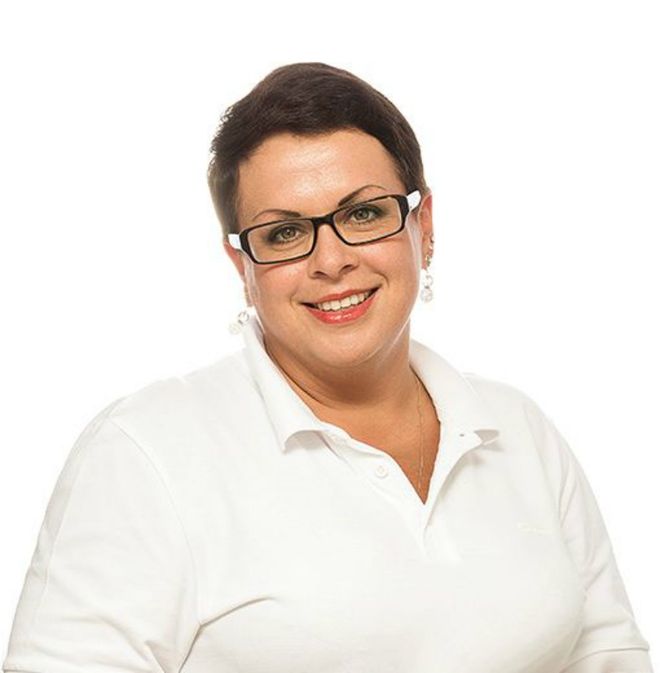
What you should pay attention to when choosing the first shoes for your child
It is not necessary to look for special shoes for the child's first steps: they can be purchased at any children's shoe store. The shoes should be slightly adjusted to the size of the foot. Such shoes usually have a sufficiently high and stiff upper, ie just above the child's ankle. They should be snug around the heel and ankle, not loose like rubber boots. In the toe area, on the other hand, the shoe can be looser: its edge can remain up to 1 cm behind the toe.
The easiest way is to measure your child's foot length and use this as a guide, because different manufacturers have different shoe sizes and therefore different foot sizes. If you come into the shop with your child, you should of course take the opportunity to try on the shoes. Alternatively, you can just sketch your foot and come to the store with a sample and the seller will help you find the right fit.
The most important signs for the 'right' children's shoes
Shoes should not impede the movement of the foot - by stiffening the toes, narrow socks contribute to foot deformities. Buying beautiful narrow models of shoes for a girl, remember that foot health is sacrificed for questionable beauty.
Bending shoes or sandals - if the sole bends easily, you can buy these shoes. Otherwise it is better not to buy them.
It is advisable to choose models without heels. Because of the heel, the child's foot slides forward as it moves, and the toes become compressed and deformed. A small heel of up to 0.5 cm is acceptable.
Smooth soles slip and make it difficult for the child to walk, while heavily ribbed soles make walking difficult. Run your hand over a flat surface and note how it feels. Then repeat this movement with the sandal or shoe in your hands. Ideally, the sliding resistance should be the same.
Adjust the shoe size according to your child's foot size
Parents know that they shouldn't buy their child shoes that are 'too big' – after all, you don't know how much feet grow in a year. But a shoe that fits by force is even worse for the child because of the lack of space. Pinched from all sides, the foot has no opportunity to move in a pinched foot, blood circulation is impaired.
And another thing that many parents don't expect from good children's shoes is the lack of spacers. Of course, these are mass-produced goods and not special orthopedic shoes that are made to order.
Myth: Orthopedic shoes for children are ugly and uncomfortable
That's true if we are talking about children's shoes of the Soviet era, which were not distinguished by special beauty and comfort. Today everything has changed, and manufacturers offer sandals, boots and shoes that do not differ from ordinary models. It is easy to find something colorful, something coarse or something that suits the child's individual taste on offer.
This misconception is not only foolish, it is downright dangerous. Orthopedic shoes are selected based on the characteristics of children's feet. Unfortunately, there is an inherent deformity that is an inevitable consequence of active wear. Even if the shoes have kept their beautiful appearance on the outside, they have changed on the inside and adapted to the foot of the previous owner. Such shoes will not give the desired effect. What's more, they can even be harmful.
Myth: The material doesn't matter, comfort is the most important thing
Convenience is very important, hardly anyone would deny that. However, it is worth considering that in children the heat exchange is much more intense than in adults, so the foot sweats profusely. For children up to the age of 7-8 years, it is recommended to buy orthopedic shoes made of nubuck or natural leather, which are breathable, ensure optimal heat exchange and do not become a breeding ground for bacteria, as is the case with 'green' shoes made of inferior quality Oilcloth is the case.
An insole is all well and good: it is an essential part of a good orthopedic shoe. But alone it will not achieve the desired effect. In addition to caring for the foot, the shoe must support the child's foot with a high and firm heel, provide the correct height and instep, and fix the foot with sturdy fasteners. Even the best insoles cannot do all this.
Does my child need orthopedic shoes for their first steps?
According to GOST 23251-83, orthopedic shoes are designed and manufactured taking into account foot, lower leg and hip pathologies. And these products are not needed for every child, but must be prescribed by an orthopedic doctor for the individual characteristics of the child.
In addition, Russian scientists conducted a study and found that these products, which are sold in stores under the name 'children's orthopedic shoes', do not meet the requirements and should not be called so. This is a promotional ploy for concerned parents.
But if the whole shoe fits and the child feels good in it, then such 'prophylactic' shoes can be worn. But not before the child is three years old! The benefits and possible harm of orthopedic shoes for children and adults will be discussed in this article.
How do I choose a shoe size for my child?
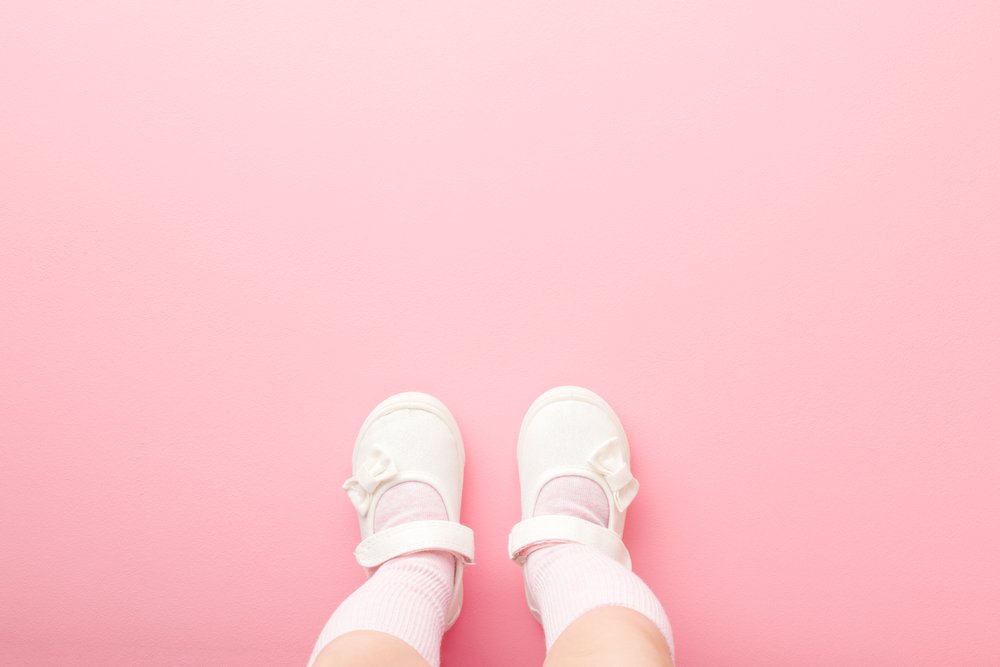
In addition to the requirements for the quality and novelty of children's shoes, it is also important not to choose the wrong size, both in length and width. Neither a too tight fit nor too much freedom on the foot is an advantage.

The first two years - during this period the foot grows particularly quickly and it is often necessary to buy new shoes every two months. Between the ages of three and six – every three months.
Before school, the foot (and hands) can grow rapidly - after all, this is an indicator of physiological readiness for learning.
The first children's shoes should be 0.5 centimeters longer than the foot. This prevents feet from swelling in hot weather or freezing from the pressure in cold weather.
It is best to buy the shoes with your child in a shop where you can not only put them on, but also try them on, walk around and see how they fit. If you can't take your child with you, measure at home - not one, but two feet: the sizes can differ, and the larger one should serve as a guide.
How do you measure your child's feet to determine size?
- Put your child's socks on.
- Measure the length from the heel to the tip of the big toe with a tape measure or ruler.
- Measure around the widest part of the foot so you don't get confused.
Many parents prefer to trace their child's foot on paper and take the silhouette cut out to the store for the consultant to determine the size. This is a good option as long as the child is on one full foot at the time.
Incorrect shoe sizes are a common cause of valgus foot. Read what this pathology is, how to recognize it in time and what you can do to correct a valgus foot deformity.
What are orthopedic shoes?
The definition of orthopedic shoes can be found in GOST № 23251-83, orthopedic shoes – the design of which is adjusted to pathological deviations of the foot, lower leg or hip.
Orthopedic shoes are shoes for people who have defects in their feet or lower limbs. These shoes are prescribed by a doctor, monitored by a doctor and sold under a 'prescription' - a doctor's prescription.
Orthopedic footwear varies depending on the foot deformity.
They can be manufactured individually (for each patient) or in small series.
Main features
– outsole. Stiff, slightly arched in the forefoot area.
- Buttocks. High, stiff. This combination provides good ankle and foot support.
– Straps or Velcro. They have the task of fixing the foot firmly in the shoe.
– insole. Individually selected or made according to the deformity of the foot.
– Cushioning in the form of small rollers in the forefoot area. This provides comfortable positioning of the foot and helps the child walk correctly from heel to toe.
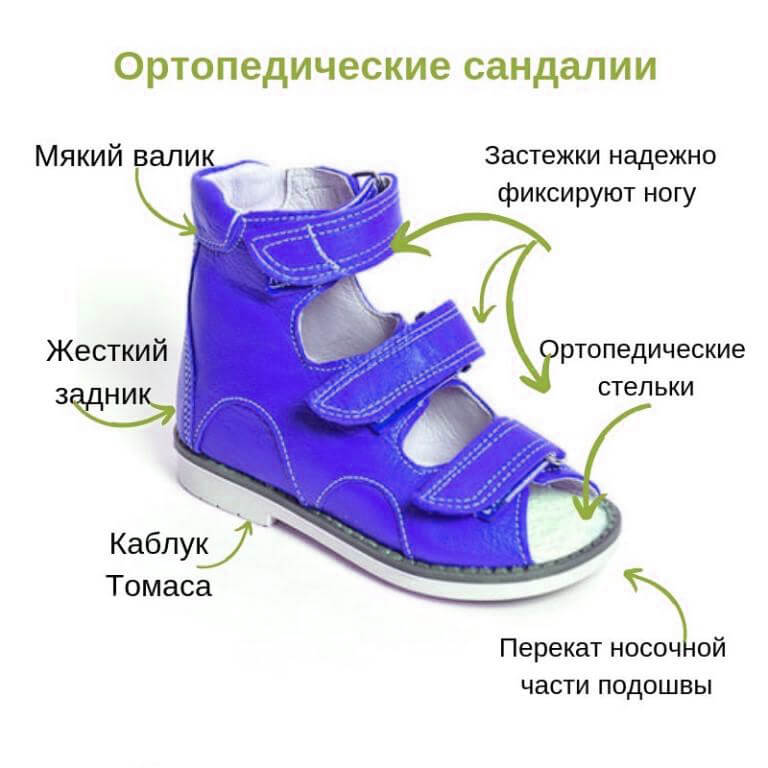
Who needs orthopedic shoes?
Products intended exclusively for treatment. Only an orthopaedist/traumatologist can diagnose such malformations during an examination. Only a specialist doctor can decide whether a specific model or orthopedic insoles are required.
Can my child wear orthopedic shoes without a 'diagnosis' and doctor's prescription?
The unanimous answer is no. Children without problems should not wear orthopedic shoes. Also, experts warn that wearing such shoes can be harmful to your health, so before buying shoes you should consult an orthopedist. The doctor will examine you and decide whether your child needs treatment or not.
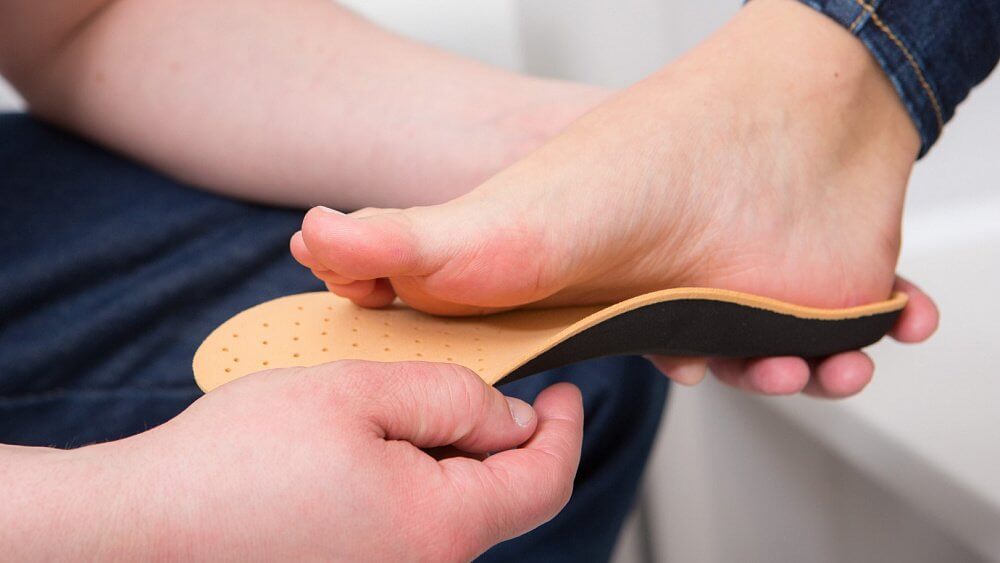
Can corrective (orthopedic) shoes be used to prevent flat feet?
In children up to the age of three, flat feet are a normal physiological phenomenon. In addition, the abundance of fatty tissue does not allow for an exact diagnosis. Therefore, the observed flat feet disappear by the age of seven when the child's feet have finished forming.
Orthopedic shoes severely limit the movements of the child's foot, so the foot muscles are not subjected to additional loads and develop faster.
On which the correct development of the foot depends
It depends on how your child puts their feet, what shoes they wear and of course how often they move their feet. To strengthen your child's foot muscles, at every opportunity you should place them on an uneven surface - sand or pebbles on the beach, grass on the lawn. Uneven surfaces can also be created at home - stuff a large canvas bag or e.g. B. Make a large pillowcase filled with whole nuts (hazelnuts or chestnuts are ideal) and encourage your child to literally stamp on that bag for at least 50-60 minutes a day. You can also buy a special orthopedic mat for this purpose.
Buy your baby's first shoes at any time - at the latest when your boy or girl is already actively trying to walk around the room on 'two'.
What should be the first shoes for your baby
- The footwear should be made of natural materials. The most common are leather or fabric.
- Shoes (sandals, loafers, boots, etc.) should have a small heel (5-15 mm). This heel is not for beauty or to prevent flat feet, but to protect the child from falling backwards, which often results in serious head injuries.
- Children's shoes should have a solid heel counter that securely fixes the heel and protects the child from accidental slipping.
- The shoe should have an insole that can be removed. It should have a small indentation for the heel and a ridge under the growing arch of the foot. Children should not wear insoles with stiff and excessively convex elements (supinators) unless prescribed by a doctor. Such insoles restrict the development of the foot muscles. Soft insoles like those from Orthoboom. on the other hand, strengthen the muscles and ligaments and keep them in the right position.
- The sole should be flexible when rolling (visually it looks like the front part of the shoe is pulled up).
- The shoe should be exactly the right size, ie. The child's foot should not 'ride' in the shoe or sandal. Children's shoes can be bought 'too large' but must not be worn until the child is old enough.
- Children's shoes shouldn't have pointed socks - no way! In order for children's feet to grow and develop properly, it is important that the child can move all of their toes freely in the sandal or shoe.
The construction described above is an orthopedic prophylaxis.
In other words, there are two types of orthopedic shoes:
- Therapeutic with 4-5 orthopedic elements, special fasteners and necessarily with a high stiff back.
- Prophylactic orthopedic shoes with 1-3 orthopedic elements (for example, a rigid heel counter, an elongated heel counter and an insole, as in Orthoboom shoes).
principles of selection.

Good posture – Good posture, healthy joints and spine. Malformations and diseases that can be traced back to the wrong choice of footwear in childhood are not uncommon.
- You can think of the first shoes when the child begins to stand up on its own and is ready to walk on its own. However, it is worth adhering to the principle that shoes should be an organic complement to the foot and put them on the child only when necessary.
- It is important that the child can move its toes freely - the toe of the shoe should be wide and high. If the forefoot is too narrow, the toes get trapped, which can lead to a foot defect such as hallux valgus in children with a flexible musculoskeletal system. The front and back of the shoe should be slightly elevated as this will facilitate the movement of the foot when walking.
- The sole should be non-slip. Otherwise, the child is at risk, be it on the linoleum in the dance hall of the kindergarten or on the tiles in any store. If the floor is wet, the risk increases many times over! And the soles of the children's feet must not be too hard. And why? Because the muscles in the foot don't work properly if the soles are too hard; they don't even work at all! With a flexible sole, the child can feel stones and bumps in the ground and correctly transfer the weight from the heel to the toes. All this contributes to the development of the feet and has a positive effect on the child's motor skills.
- Children's shoes should be breathable - the foot should not sweat. Therefore, buy shoes made of leather, natural fabrics (e.g. cotton) or materials with built-in membranes that wick sweat from the inside out but prevent it from getting wet.
- The shaft should reach just above the ankle. The heel counter does not have to be very rigid, the important thing is that it adapts well to the foot, but a slight lateral movement is acceptable when the child is walking or running.
- Proper children's shoes must not have a completely flat inner sole. The sole must be slightly raised in the middle area. It is important that the inside of the shoe does not have any seams that could make the young wearer uncomfortable. It is an advantage if the inside of the shoe is made of a soft material so that the child can walk comfortably.
The best first shoes for babies - Attipas

Walking barefoot promotes the development of children's feet, and muscles work best when the ground is uneven. Sand, rounded stones, grass and moss massage the receptors responsible for the functioning of the most important organs and help form the arch of the foot. However, we live in a world of concrete and asphalt, and the weather is so changeable that constantly walking barefoot will do your child more harm than good. That's why you need the right anatomical footwear.
Attipas is an innovative approach to the development of children's feet. They are shoes that:
- Promotes the natural development of the foot thanks to the even pressure distribution.
- Acts on biologically active points, which also affects the cognitive development of the child's brain.
- It has a very soft cotton sock and a flexible sole made of eco-friendly, hypoallergenic silicone.
- It is breathable, antiperspirant and hygienic.
- The strong heel padding offers good heel support without restricting movement.
It has a wide, protective toe box that doesn't hinder proper toe development.
Read more:- Shoes for valgus deformities in children.
- Baby foot size chart.
- Orthopedic shoes for clubfoot in children.
- Orsetto Size Chart.
- Orthoses for valgus in children.
- Toe movement in children.
- Optimal heel height for women.
- What does the insole of a child's shoe look like?.
